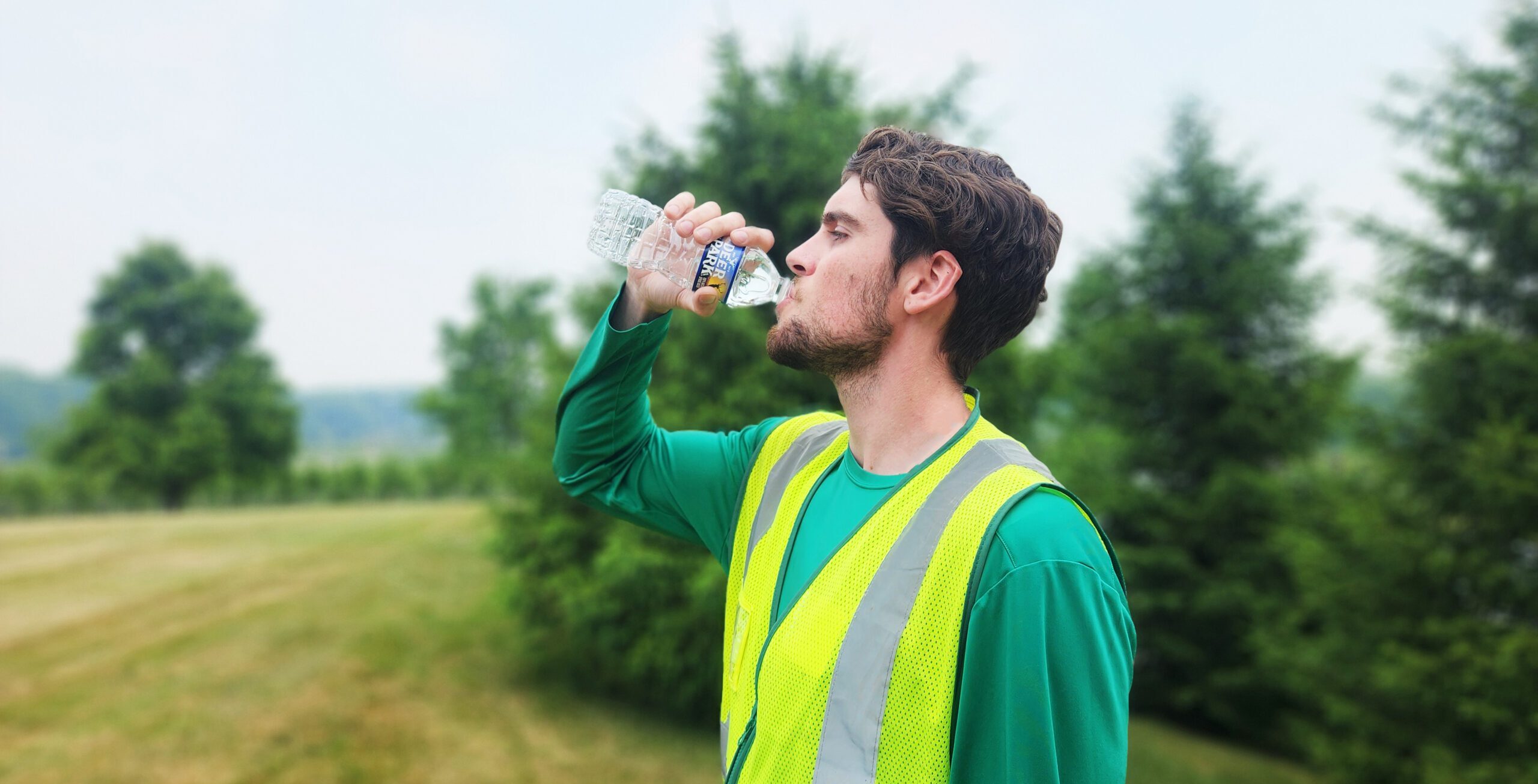
 By Adrian Karver, Regional Safety Manager
By Adrian Karver, Regional Safety Manager
Summer brings warm weather, long weekends, and backyard cookouts, but it also comes with unique hazards. To stay safe during hot weather, it’s important to be aware of and address these risks. Let’s explore some of the top summer safety hazards and how to manage them.
- Fatigue: The sun tends to sap our energy because the body is working overtime to keep you cool. Symptoms include weariness, irritability, reduced alertness, headaches, and loss of appetite. Fatigue can impair mental and physical functioning, affect judgment and concentration, slow reaction time, and lower motivation. This is particularly risky for those working near traffic or operating heavy machinery.
- Heat-Related Illnesses: Heat stress can cause heat rashes, cramps, exhaustion, and even heat stroke. Heat rash presents as red bumps on the skin, while heat cramps are painful muscle contractions. Heat exhaustion occurs when the body loses too much water and salt. If left untreated, it can progress to heat stroke, which happens when the body is no longer able to cool itself down and should be treated as a medical emergency.
- Dehydration: The combination of extreme heat and hard work increases water loss and poses a huge health and safety risk. Symptoms of dehydration include thirst, fatigue, muscle cramps, nausea, dizziness, excessive sweating, darker urine, and hot/dry skin. Replenishing lost fluid is critical because water plays a vital role in maintaining optimal body function—it regulates core body temperature, transports nutrients to organs, and aids in flushing out internal toxins.
- Sun Exposure: Direct exposure to UV rays carries its own risks, distinct from heat exposure. Extended sun exposure can result in short-term effects such as sunburns, and over the long term, workers may develop leathery and wrinkled skin as well as an elevated risk of potentially life-threatening skin cancer.
To manage these hazards, managers can:
- Adjust schedules to minimize outdoor work during the hottest period (10am-2pm).
- Reduce physical demands in high-temperature and high-humidity conditions.
- Provide relief workers or assign extra workers for physically demanding tasks.
- Supply weather-appropriate personal protective equipment (PPE).
- Mandate frequent rest periods in shaded areas.
- Provide cool water and non-alcoholic, non-caffeinated beverages.
- Offer salty snacks to replenish lost salts.
- Train employees to recognize heat-related illness signs and take appropriate action.
Likewise, employees can:
- Wear light-colored, loose-fitting, breathable clothing (e.g., cotton).
- Cover exposed skin with sunscreen and wear a hat with a flap or brim for ear and neck protection.
- Stay vigilant for signs of heat-related illness in themselves and their teammates.
- Avoid alcoholic, caffeinated, and sugary drinks that worsen dehydration.
- Regularly check skin for any unusual moles or spots and seek medical attention for changes.
By understanding these hazards and taking preventive measures, both managers and employees can ensure a safe and productive summer season. Stay safe out there!